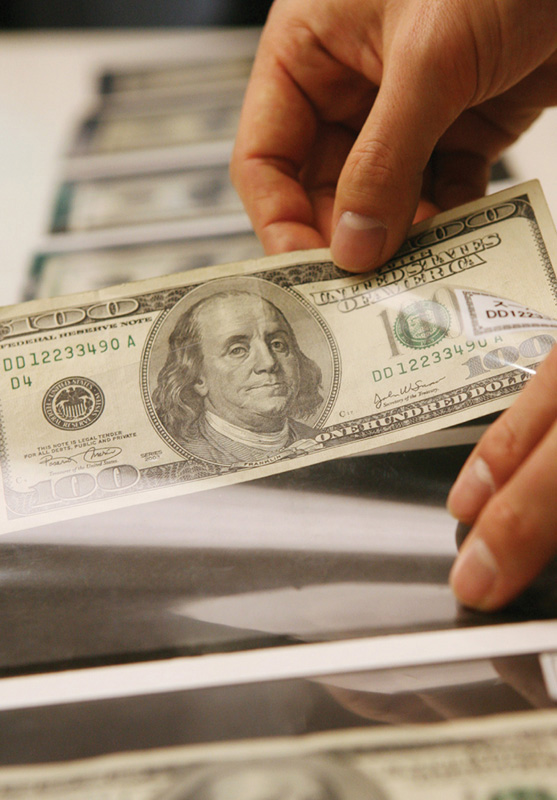
LOCATION Pyongyang, North Korea
NEAREST POPULATION HUB Pyongyang
SECRECY OVERVIEW Operations classified: the secretive financial hub responsible for maintaining North Korea’s ruling elite.
Sometimes also referred to as Bureau 39, North Korea’s Room 39 has been described by journalist Kelly Olsen as “one of the most secret organizations in arguably the world’s most secretive state.” Analysts believe it raises funds for the governing regime through a mixture of legal and illegal enterprises. Much of the money it produces is allegedly used to buy the ongoing support of senior officials.
Established sometime in the late 1970s, Room 39 is believed to be housed in the ruling Workers’ Party Building in the Central Committee precinct, located in downtown Pyongyang. From here, a central staff of around 130 people coordinates international operations. Their activities have been likened to those of an international investment bank—although much of the work “on the ground” is left to local and relatively small-scale criminal gangs. The principal aim of Room 39 is to provide a stash of hard currency for the personal use of senior government figures. Until his death in 2011, it was essentially the personal slush fund of North Korean leader Kim Jong-il.
It is estimated that Room 39 generates between half a billion and a billion dollars each year through various illegal enterprises. Among the illegitimate businesses it is supposedly involved in are the counterfeiting of bank notes, money laundering, exporting fake cigarettes and pharmaceuticals, and smuggling narcotics (especially heroin and crystal methamphetamine). Other areas of its business are ostensibly legitimate (ranging from overseas restaurant chains to mining and agricultural operations) though few are untainted by the claims of money laundering. Room 39 keeps a lot of fingers in a lot of pies, with interests in at least a hundred overseas trading companies. Pyongyang, however, denies that it is party to any irregular activities.
Kim Jong-il was said to have used the cash generated by Room 39 to lavish gifts upon key figures within his cabinet, the ruling Workers’ Party and the military. It is alleged that he spent millions each year on high-end consumer goods including cognac, luxury cars and the latest electronic items in order to secure his power base. Other money, it has been suggested, was used to prop up his spending on nuclear weapons and ballistic missiles programs.

FAKE BENJAMINS The “superdollar” (counterfeit hundred-dollar bill) was in worldwide circulation by the late 1980s. Expertly produced, these forgeries replicate many of the security features employed by genuine currency. While the finger of blame has pointed in several directions, North Korea’s Room 39 is thought mostly likely to be behind the scheme.
One of Room 39’s most successful scams has been the counterfeiting of US currency. For many years, the US government has been aware of the widespread circulation of so-called “superdollars”—fake US$100 bills of such high quality that only sophisticated laboratory testing can expose them. These notes are smuggled across international boundaries to be laundered, leaving the North Korean regime with huge volumes of genuine currency. Estimates of the value of Room 39-created superdollars vary from around US$45 million to several hundred million dollars.
The international community, and the United States in particular, has long grappled to confront the threat from Room 39. For instance, in 2004 Austria—under pressure from Washington—closed down the North Korean-owned Golden Star Bank in Vienna, which was suspected of participating in laundering. Even more significantly, a year later the Banco Delta Asia in Macao (a Chinese dependency) was labeled by the US Treasury as a “primary money-laundering concern” and US$25 million of assets linked to Kim were frozen.
Another important money-making scheme was large-scale insurance fraud, which came to prominence after the international community moved to undermine Pyongyang’s counterfeiting operations. According to evidence from North Korean defectors, the state-owned Korean National Insurance Company (KNIC) was highly active in selling on its insurance liabilities to companies in other parts of the world. It is then alleged that, under the guidance of Room 39, major accidents were faked. One cited example was a helicopter crashing into a government warehouse in the capital city. Ferry and rail disasters are also alleged to have been set up. KNIC would then pick up multi-million dollar pay-outs from foreign companies that had bought its liabilities. It is believed that this scam has brought in US$50–60 million per year.
In a country that consistently runs massive trade deficits, Room 39 went a long way to making the Kim clan’s largesse possible and maintaining its “court economy,” a system that protects government funding despite the failure of North Korea’s traditional economy. Just how the 2011 death of Kim Jong-il and the succession of his son Kim Jong-un will affect the future of Room 39 remains to be seen.

1 SHOW OF MIGHT The vast Kim Il-sung Square in Pyongyang was inaugurated in 1954, and is large enough to host rallies of several hundred thousand people. Here troops march past the Worker’s Party Building, which is adorned with a giant image of Kim, North Korea’s founding father.